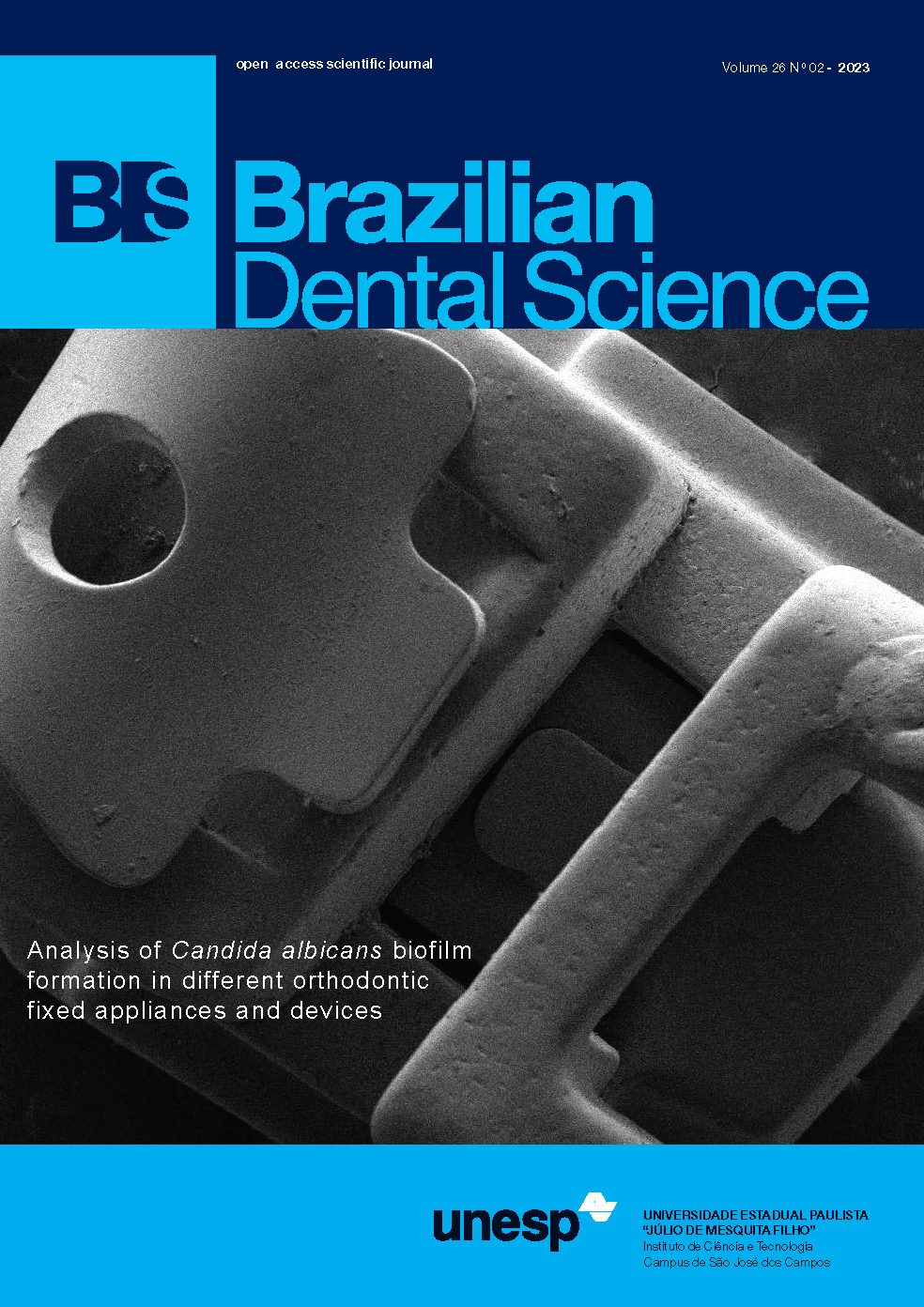Analysis of biofilm formation by Candida albicans in different types of orthodontic fixed appliances and devices
DOI:
https://doi.org/10.4322/bds.2023.e3440Resumo
Objective: in this study, biofilm formation by Candida albicans in fixed orthodontic appliances was evaluated. Material and Methods: a total of 300 conventional metal brackets (MC), ceramic (CB), self-ligation (SLB), nickel-titanium (NiTi), and nickel-chromium (NiCr) wires, and ligatures types were organized into thirty groups (n=10). To induce biofilm formation, brackets, wires, and ligatures were joined, sterilized, placed in 24-well plates, contaminated with standardized suspensions of C. albicans (107 cells/mL), and incubated at 37 °C for 48 h with shaking. The biofilms formed were detached using an ultrasonic homogenizer, and suspensions were serially diluted and plated on Sabouraud dextrose agar to determine colony-forming units per mL. Scanning electron microscopy was performed before and after the biofilm formation. Results: lower amount of biofilm formation was observed in the MC group than in the CB and SLB groups (p<0.0001). SLB and CB showed similar biofilm formation rates (p=0.855). In general, the cross-sectional wires .018”x.025” showed higher biofilm formation when associated with the three types of brackets. When brackets, wires, and ligatures were associated, the sets with NiCr wires and SSL ligatures with MC brackets (p=0.0008) and CB (p=0.0003) showed higher biofilm formation. Conclusion: thus, brackets of MC with NiTi and NiCr wires showed lower biofilm formation, regardless of the ligature and cross-sectional or gauge of the wire and, MC and CB brackets with NiCr wires and SSL ligatures were more likely to accumulate biofilms.
KEYWORDS
Biofilms, Candida albicans, Orthodontic appliances, Orthodontic brackets, Scanning electron microscopy.
Downloads
Downloads
Publicado
Como Citar
Edição
Seção
Licença
TRANSFERÊNCIA DE DIREITOS AUTORAIS E DECLARAÇÃO DE RESPONSABILIDADE
Toda a propriedade de direitos autorais do artigo "____________________________________________________________________" é transferido do autor(es) para a CIÊNCIA ODONTOLÓGICA BRASILEIRA, no caso do trabalho ser publicado. O artigo não foi publicado em outro lugar e não foi submetido simultaneamente para publicação em outra revista.
Vimos por meio deste, atestar que trabalho é original e não apresenta dados manipulados, fraude ou plágio. Fizemos contribuição científica significativa para o estudo e estamos cientes dos dados apresentados e de acordo com a versão final do artigo. Assumimos total responsabilidade pelos aspectos éticos do estudo.
Este texto deve ser impresso e assinado por todos os autores. A versão digitalizada deverá ser apresentada como arquivo suplementar durante o processo de submissão.




























